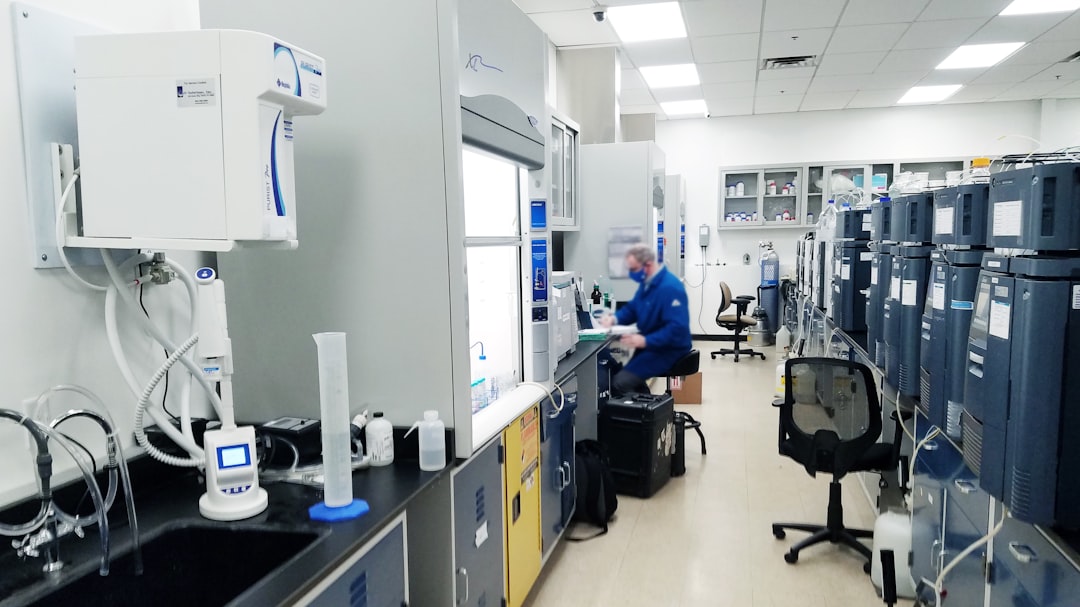What is it about?
Hydrogen is a promising fuel, because it creates only one clean by-product: water. But, transporting and storing hydrogen fuel is very challenging. Ammonia is a very accessible indirect hydrogen-storage medium with established technologies for its use, making it a promising fuel source for hydrogen fuel cells. Thus, research in the field is increasingly focused on scalable but ‘green’ ammonia production methods alongside improving ammonia fuel cells. This review describes designs and protocols that can optimise the use of ammonia fuel cells, compares different types of ammonia fuel cells, and compares ammonia fuel cells to other types of fuel cells, in terms of their functioning, operating conditions, catalyst choice, efficiency, and power output.
Featured Image

Photo by Karsten Würth (➡️ @karsten.wuerth) on Unsplash
Why is it important?
As fossil fuels continue to remain the mainstream energy source, the associated carbon footprint has become a major environmental threat. A rapid drastic shift to a renewables-based society is needed. When it comes to renewable sources of energy, hydrogen fuel cells, which are driven by chemical reactions, are more reliable and efficient than natural sources like wind or solar, which are dependent on environmental variables. While ammonia fuel cells may be promising as a technology that can be implemented in a broad range of applications quickly, if ammonia is not produced in a green manner, is the fuel cell truly environmentally friendly? This review sheds light on advances in the synthesis of ammonia fuel cells and their potential applications in the energy sector. KEY TAKEAWAY: Ammonia fuel cells can be an excellent carbon-free, cost-efficient, and clean energy technology, with the potential to become a long-term sustainable option in the future. Understanding the advantages and drawbacks of different fuel cells is, however, important to determine their specific applications and feasibility, while continuing to improve them. This research relates to the following Sustainable Development Goals: • SDG 7: Affordable and Clean Energy • SDG 9: Industry, Innovation, and Infrastructure • SDG 13: Climate Action • SDG 12: Responsible Consumption and Production • SDG 11: Sustainable Cities and Communities
Read the Original
This page is a summary of: Recent progress in ammonia fuel cells and their potential applications, Journal of Materials Chemistry A, January 2021, Royal Society of Chemistry,
DOI: 10.1039/d0ta08810b.
You can read the full text:
Resources
SDG Showcase: Goal 7 – Affordable and Clean Energy
More plain language summaries of research relevant to Sustainable Development Goal 7: Affordable and Clean Energy – brought to you by the SDG Knowledge Cooperative
SDG Showcase: Goal 9 – Industry, Innovation and Infrastructure
More plain language summaries of research relevant to Sustainable Development Goal 9: Industry, Innovation and Infrastructure – brought to you by the SDG Knowledge Cooperative
SDG Showcase: Goal 13 – Climate Action
More plain language summaries of research relevant to Sustainable Development Goal 13: Climate Action – brought to you by the SDG Knowledge Cooperative
SDG Showcase: Goal 12 – Responsible Consumption and Production
More plain language summaries of research relevant to Sustainable Development Goal 12: Responsible Consumption and Production – brought to you by the SDG Knowledge Cooperative
SDG Showcase: Goal 11 – Sustainable Cities and Communities
More plain language summaries of research relevant to Sustainable Development Goal 11: Sustainable Cities and Communities – brought to you by the SDG Knowledge Cooperative
RSC Sustainable Development Goals Showcase
More plain language summaries from RSC relevant to Sustainable Development Goals
Royal Society of Chemistry Climate Change Showcase
More plain language summaries from RSC relevant to Climate Change
SDG Knowledge Cooperative
More plain language summaries of research relevant to all the Sustainable Development Goals
Climate Change Showcase
More plain language summaries of research relevant to Climate Change
Contributors
The following have contributed to this page










